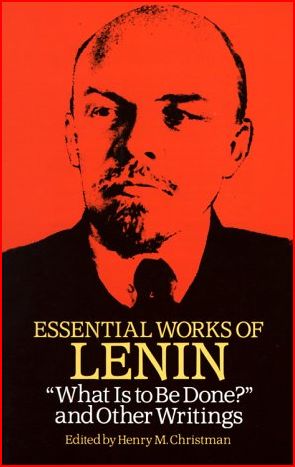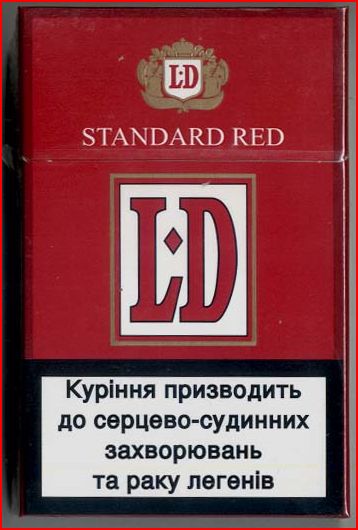Russia, Cigarettes & Snus: What Is To Be Done?
 “What is to be Done?” is the title of at least two pre-Communist treatises, one written by Nikolai Chernyshevksy in 1861 (while in prison in St. Petersburg), which called on the working classes of Russia to unite under a vanguard party, and another, written by Vladimir Lenin, which claimed that this would lead to worker-led ‘trade-unionism’ and not allow the intellectuals to create a Workers’ Revolution based on intellectual scientific principals.
“What is to be Done?” is the title of at least two pre-Communist treatises, one written by Nikolai Chernyshevksy in 1861 (while in prison in St. Petersburg), which called on the working classes of Russia to unite under a vanguard party, and another, written by Vladimir Lenin, which claimed that this would lead to worker-led ‘trade-unionism’ and not allow the intellectuals to create a Workers’ Revolution based on intellectual scientific principals.
It’s nice to know even the Communists hated trade unions.
Now before all you chaw-chompers get in your F-150s lookin’ for me, you’ll have to admit that all that homework has long been filed away. Russia today sits perpetually on the brink of uncertainty, and through the ups, downs, ups, and downs of its contemporary post-Soviet life, many industries have been altered forever, including tobacco. In a big way.
In the early 1990s, the US led Poland through economic ‘shock therapy,’ which allowed individuals to buy shares of the state-owned companies that employed them. It worked, and Poland transitioned quickly with many bumps into a dynamic capitalist society. It helped that they had been capitalist and democratic before WWII and the subsequent occupation by the USSR until 1989.
Russia in 1991, it was thought, could be saved by a ‘cookie-cutter’ solution. Let’s do the same thing. So, workers bought the shares in good faith. But there was hyper-inflation, no food on the store-shelves, and a burgeoning black market for life’s basics. In a national panic, the State company’s bosses bought up the shares for a pittance, gutted the factories and State enterprises, and moved their money to offshore Swiss accounts. Thus were born the ‘oligarchs’ and Russia stumbled through the early nineties.
a burgeoning black market for life’s basics. In a national panic, the State company’s bosses bought up the shares for a pittance, gutted the factories and State enterprises, and moved their money to offshore Swiss accounts. Thus were born the ‘oligarchs’ and Russia stumbled through the early nineties.
During this time, Russia had almost 60 tobacco factories. Each produced the same state brands, such as Laika, Droog, Kosmos, Belomorkanal, and Prima, the latter two being the unfiltered favorites of the masses. They were situated regionally to supply local populations.
When the wall came down, money dried up, and the factories came to a halt. While the Russian government signed a contract with China for emergency shipments of cigarettes, some Moscow entrepreneurs were already arranging rail shipments of Marlboro. It arrived in giant freight trains daily, and was sold on open markets.
Oh, I didn’t mention this. The Russians SMOKE. They smoke lots. I think the number is 40+%. I went into a restaurant today, and I was told, “we only have Smoking available. Non-smoking is closed. Is that OK?” It was. Because Russians who smoke have money, and to deny them access to a restaurant, especially one which is not busy, is suicide.
Back to the factories. RJR bought “Petro,” the State factory near St. Petersburg. BAT bought “Yava,” the famous Moscow factory, Liggett bought “Ducat,” the other famous Moscow factory, and Philip Morris bought a site near St. Pete and built its own factory from scratch. BAT also bought the Saratov tobacco factory and a smaller one in St. Petersburg. All in the first half of the 1990s.
 While nosier avid snusers already know that “Liggett-Ducat” is the genesis of the ‘LD’ brand, Liggett-Ducat actually sat on its local brand portfolio as it went from Joint Venture to a wholly-owned subsidiary of Liggett’s parent. I worked here from 1997-1999. The idea was to take an inefficient Soviet company, and turn it around by bringing in Western management and systems. Liggett-Ducat and its brand-new factory was purchased by Gallaher Group for $400m in 2000. It was sold again, as part of Gallaher, to JTI in 2007.
While nosier avid snusers already know that “Liggett-Ducat” is the genesis of the ‘LD’ brand, Liggett-Ducat actually sat on its local brand portfolio as it went from Joint Venture to a wholly-owned subsidiary of Liggett’s parent. I worked here from 1997-1999. The idea was to take an inefficient Soviet company, and turn it around by bringing in Western management and systems. Liggett-Ducat and its brand-new factory was purchased by Gallaher Group for $400m in 2000. It was sold again, as part of Gallaher, to JTI in 2007.
All companies who bought existing Soviet-era enterprises went through the same processes. Thousands of abacus-laden ‘accountants’ and many layers of useless middle management were laid off. Efficient machines were brought in, and throughout the ’90s, Russian ‘Big Tobacco” developed at warp speed. The remaining local factories, some of whom were bought by their Chinese tobacco suppliers to settle debts, and a few others holding out for a good price, didn’t stand a chance in this 300b stick market. Distributors, also consolidating, put all their money into big tobacco, and left the small guys in the dust. Russian consumers moved from local oriental-blend brands and non-filtered 70mm cigarettes to standard 83mm American Blend King Size. Russia’s desire to enter into the WHO’s tar/nic/advertising guidelines was the final deathknell for locals who couldn’t afford the equipment to produce a cigarette with 10mg tar, the ceiling.
In 2009, outdoor advertising is banned, but the culture is, decidedly, a smoking one. And they drink lots, as well.
There are many, many stories within the history of the Russian tobacco business which I could tell. As I watched a ‘Nicorette’ ad here in St. Petersburg this morning, I realized that, in all the shops I visited since I’ve been here on the job, none sold snus. So I went to the website of Swedish Match’s official distributor here, and found 30-or-so shops that sell the product in St. Petersburg. SM has been flogging the product for 6-7 years here, and while there is a duty-free market for Finns who come over on weekend jaunts, I have yet to see snus sold in regular convenience. Same as the USA, right? Yes, but still with some flexibility to get the message out.
And only if these smoking Russians want to hear it……….
From Russia with Love,
ANDREW ROMEO
An Insider’s Perspective
Reporting from St. Petersburg, Russia for SnusCENTRAL.org
About author
You might also like
Philip Morris Says Snus will not Help Smokers Quit
Here is a great example of how Big Tobacco loves the Press. Though this one was a bit obvious, keen observers should begin watching for more articles like this. It’s
SELLING SNUS IN SCANDINAVIA: A PRIMER
It’s difficult being in Big Tobacco and running its snus business in Nordic Europe. It’s even more difficult if you are in Small Tobacco, and don’t have a cigarette business
Coming REALLY Soon to SnusCENTRAL.org
I’m pleased to announce the imminent arrival at the SnusCENTRAL Command Complex of Andrew Romeo. You can read a little about why I am so excited about his arrival above


